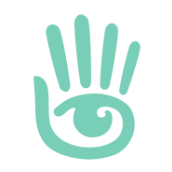

Second Life
What is Second Life?
Second Life is an online 3D virtual world created by its users who make their own avatars and are able to interact with other avatars, places and objects. Second Life users can create, buy and sell anything they can imagine using Linden dollars – a virtual currency which can be exchanged for real money. The different areas of Second Life are restricted by the age of the user. There is a 'general' area for users under 18, a 'moderate' area for adults and an 'adult' area for users over 18 with verified accounts. Second Life users can communicate privately or in groups, through a variety of voice chat and messaging functions. The voice chat features can be disabled and individual users and objects can be muted.
Website: secondlife.com
How do people use Second Life?
Learn more about the benefits and risks associated with how people use virtual worlds like Second Life.
Second Life is used for: anonymous communication, encrypted, gaming, in-app purchasing, messaging/online chat, online relationships, screen capture and video calling.
How can you report online abuse, ask for content to be removed or block someone?
These links are provided by Second Life:
- Report abuse
Learn how to report abusive or inappropriate behaviour to Second Life. - Block a person or object
Learn how to block a person or object in Second Life. - Prevent contact from strangers
How to stop someone from contacting you. - Privacy policy
Outlines Second Life’s privacy policy guidelines including the information they collect and how they use your data.
Key safety links
These links are provided by Second Life:
- Maturity ratings
Provides information about maturity ratings which outline the types of content and behaviours allowed in different areas of Second Life. - Community standards
Outlines what is acceptable and not acceptable behaviour when using Second Life. - Shopping fraud and other scams
Offers practical tips to protect against scams, phishing and disputes between Second Life players. - Terms and conditions
The terms you agree to when you use Second Life.
Last updated: 05/05/2025